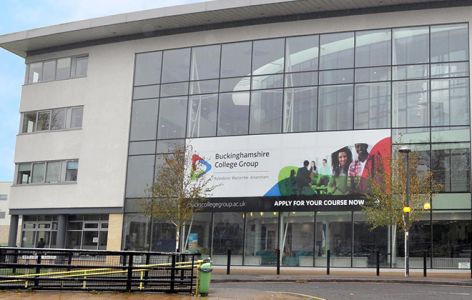- By Buckinghamshire Business First
- 4 February, 2016

Share by email
Welcome to our first charity newsletter of the year, an edition with information, opportunities and support for businesses and charities alike.
Buckinghamshire has approximately 2,500 charities registered with the Charities Commission, making the Voluntary & Community Sector a significant one within Buckinghamshire, employing around 30,000 people, with around 60,000 volunteers.
The sector is keen to engage with business. This newsletter provides a link between businesses and charities, creating chances for learning, up-skilling and community involvement.
Good marketing is a gift for charities and good training will earn back its investment
“Marketing? There isn’t the time. There isn’t the money.”
A previous Buckinghamshire Business First charity newsletter highlighted the findings of the UK Small Charity Sector Skills Survey, particularly that marketing was a significant skill gap. Time and money featured prominently as barriers to better marketing communications. Smaller charities cannot afford highly experienced or full time staff and often rely on volunteers. Training of those volunteers or more junior staff costs money and requires them to be “off the job” for a day.
But choosing to be frugal when it comes to marketing training may be to miss the opportunity that better skilling and training can bring.
If someone donates £5 to your charity, that is a fundraising success. If they can be converted into a continuing supporter making a regular donation, they may have a lifetime value of £500 plus. If every donor had a £500 lifetime value to your charity, would it be worth £50 to get and retain them?
That is one value in effective marketing – taking your fundraising to the next level, engaging with your donors so they understand the impact of their contribution, and persuading them to stay engaged and committed to the charity’s aims beyond their initial act of generosity.
Marketing can also make an important contribution to saving time and effort. Consider organising a fundraising event. If your charity is low profile, you may have to start every time explaining who you are and the type of event you want to put on to everyone from venue hire companies, licensing authorities, health and safety officers and sponsors, to a multitude of other suppliers.
Collaborating with other charities or community groups also becomes easier and more productive when people “get” what you are about and what you stand for. When they understand your “brand”.
Effective marketing communications – whether you are a local, national or international charity – can help smooth the way and save time, by making people aware of your charity and what it stands for, making part of all those conversations redundant.
The fact remains that time and money are always tight in the charitable sector, so how can small charities get the most out of the resources they do have available?
There are practical steps you can take to reduce costs or get the most for your training budget:
- Band together with other charities for training – it’s usually more economical to train one group of four than two groups of two
- Have the training in-house – if you have a small group, is it cheaper to pay the trainer to come to you or for you to go to the trainer? Can it be organised around working priorities – perhaps two half day sessions rather than a day so you can keep work ticking over?
- Get training tailored to your needs – if your priority is developing a social media skill set, don’t make do with a broad marketing skills training session that only skims the surface.
How do you know if you have a skills gap?
Rather than a vague feeling that “we should be doing more”, try to pin down your strengths and weaknesses. Here are some questions to get you thinking:
Do I know my audience?
In business, people talk about qualifying leads and audience profiling. It’s about identifying the right people and tailoring your message to them. At a most basic level, if you are a local charity in Buckinghamshire, someone living in Scotland is unlikely to be the right profile for you. Going further and looking at the profile of your likely supporters and volunteers will allow you to build a high quality database of leads, rather than just high volume.
Can I segment my audience?
It sounds technical, but it’s just about recognising your supporters and donors, discovering more about them and engaging with them. If you are a conservation charity digging out hedgerows and managing the landscape, you may choose to target your supporters with practical skills to volunteer for those duties while another segment might be encouraged to undertake the administration of fundraising events.
What makes you so special?
What will make people decide to support your charity rather than another? What makes you different – what’s your Unique Selling Point (USP)? Does your brand communicate that?
Are you a one-trick pony?
Do you rely on one or just a few ways to talk to your supporters? Do you know how to harness the impact of social media? Are you making the most of “data capture” opportunities? Be sure you have a strategy that uses all the possible channels and combines it with audience profiling to match the channel to the audience – and, where you can, ask people how they prefer you to communicate, so you can maintain a conversation with them.
Do you remember your current supporters while you chase new ones?
It is often much easier to get someone who is already engaged with you to give more of their time or to make another donation. Don’t forget to keep them connected with the impact their support has had, and don’t be shy about asking for more.
Do you respond quickly and efficiently?
Responding to interest in your charity or a campaign you run is more than an administrative process. It is the opportunity to start that “lifetime” relationship with your donor or supporter. Make sure you have a programme of engagement that will remind them of their interest and encourage them to participate. (It’s amazing the number of people who only give blood once…)
Have I remembered to assess “the lifetime value”?
Make relationship building as important as recruiting donors and supporters. Not only can you get more support from them in terms of time and money, they become a voice for your objectives when they interact with others in everyday life.
Do I measure my results to ensure I am effective and cost-effective?
Every time you run a campaign or event, try to measure the result. How many people signed up to the newsletter email? How many took part in the fun run? Has the average donation gone up since we ran the campaign last time? A crude measure is better than no measure at all. Use the information to refine your activity to make it more cost-effective.
FIRST 10 MARKETING CLINICS OFFERED FREE-OF-CHARGE
So, have you that sense that your current marketing strategy isn’t quite delivering? Or that your resources could be better allocated to make more of an impact? Do you want to understand how new marketing skills or an alternative approach could make the difference? As part of our commitment to charities in Buckinghamshire, we’re giving away 10 free 1:1 marketing clinics to the first 10 respondents to this article. No commitment, no gimmicks, just good advice. Email us to book a slot: fee.chandler@verve42.com.
Fee Chandler is a partner in Verve42 Communications LLP, a marketing communications agency based in Marlow and Oxford, that offers support and training to organisations that add value to society in the charitable, educational, social enterprise and public sectors.







